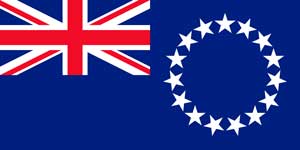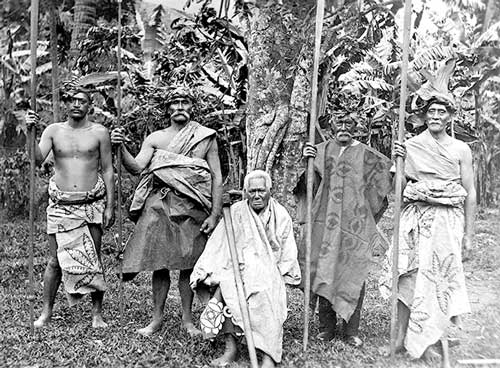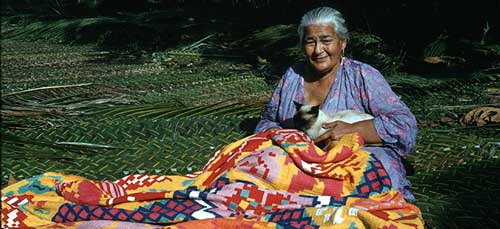Map
Flag

Quick facts
Official Name: Cook Islands (Kūki ‘Āirani)
Indigenous Peoples: Cook Island Maori
Official Languages: Cook Island Maori, also called “Rarotongan,” Pukapukan and English
Political Status: Independent nation, in free association with New Zealand
Capital: Avarua
Population: 14,974 (2011 est.)
Greeting: Kia orana
History and geography

The Cook Islands were first settled in the 6th century by Polynesian people who migrated from Tahiti in the northeast. This group of islands are in the South Pacific, northeast of New Zealand, between French Polynesia and American Samoa. There are 15 major islands spread over 2,200,000 sq km (849,425 sq mi) of ocean, divided into two distinct groups: the Southern Cook Islands and the Northern Cook Islands made up of coral atolls.
The islands were formed by volcanic activity; the northern group is older and consists of six atolls, which are sunken volcanoes topped by coral growth. The climate is moderate to tropical.
The Spanish visited the islands in the 16th century. The name “Cook Islands” is in honor of Captain James Cook who visited the islands in 1773 and 1777. The name first appeared on a Russian naval chart published in the 1820s.
The Cook Islands became a British protectorate in 1888, due largely to community fears that France might occupy the territory as it had Tahiti. In the year 1900, the leading islanders presented a petition asking that the islands (including Niue “if possible”) be annexed as British territory. The islands were included within the boundaries of the Colony of New Zealand in 1901 under the Colonial Boundaries Act, 1895, of the United Kingdom. The boundary change became effective in June 1901, and the Cook Islands have had a formal relationship with New Zealand ever since.
When the British Nationality and New Zealand Citizenship Act 1948 came into effect in January 1949, Cook Islanders who were British subjects gained New Zealand citizenship. The country remained a New Zealand dependent territory until 1965, when the New Zealand Government decided to offer self-government to the people. In that year, Albert Henry of the Cook Islands Party was elected as the first premier.
Tourism is the Cook Islands’ economic base. A small amount of fruit is also exported. The few manufacturing activities are fruit-processing, clothing, and handicrafts.
Trade deficits are made up for by remittances from emigrants and by foreign aid, overwhelmingly from New Zealand.
Arts and culture

Music in the Cook Islands is varied, with Christian songs being quite popular, but traditional dancing and songs in Polynesian languages are still sung and performed. The Cook Islanders are also known for woodcarving (different styles for each island); weaving (mats, baskets and hats), island scenery patchwork quilts (tivaevae), as well as contemporary art such as painting and photography.
